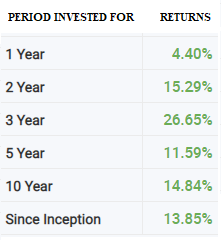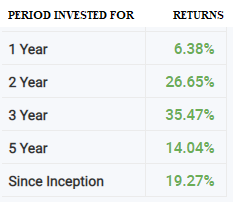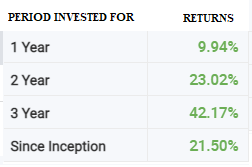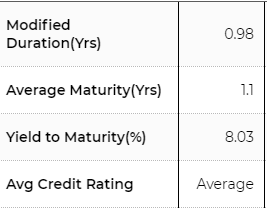Until a few years back, I invested wholly on my own. Almost 100% of my investments were in stocks and I hardly ever looked at mutual funds. Over time, I have realized the importance of diversification both in terms of asset classes and also in terms of managers. It is important to put your investments in 2-3 baskets based on who is managing them. Even the likes of Elon Musk and Mukesh Ambani invest in funds managed by professional fund managers. Ever wondered why? No matter how smart or educated you are, you will go wrong with your stocks more than a few times in life. 100%!!
One of the best ways to diversify the minds who manage your investments is to choose a PMS or a mutual fund (in my view, none of the PMS schemes offer any great advantage over a mutual fund. In fact, the reverse may be true).
Coming to the two biggest enquiries which people have about mutual funds-
First, how many mutual funds should you buy?
Second, which funds should we buy for the long term.
Of course, an ideal allocation will be based on your individual circumstances including your short- and long-term goals and your capacity to hold the funds or to keep doing the SIPs. In general, however, spreading your investments around 4-5 mutual funds will work best for most investors.
Below, I have given out a list of 5 mutual funds where you should start your SIPs and invest for long term.
Large Cap Fund – ICICI Prudential Blue-chip Fund
As the name suggests, the scheme invests predominantly in large cap stocks. It is a 15-year-old fund and has delivered 13.60% returns since inception. Past returns and top 10 holdings of ICICI Prudential Blue-chip Fund –
| Stock | % Holdings |
| ICICI Bank Ltd. | 9.68% |
| Reliance Industries Ltd. | 8.14% |
| HDFC Bank Ltd. | 6.73% |
| Larsen & Toubro Ltd. | 6.63% |
| Infosys Ltd | 6.30% |
| Axis Bank Ltd. | 5.46% |
| Bharti Airtel Ltd. | 3.42% |
| Maruti Suzuki India Ltd. | 3.29% |
| Ultratech Cement Ltd. | 3.28% |
| SBI Life Insurance Company Ltd. | 2.37% |
Mid Cap Fund – Motilal Oswal Mid Cap Fund
Motilal Osal Mid Cap fFund is a 10 year old fund and invests ~ 65% in mid and small cap stocks. This fund has consistently beaten its benchmark by a mile over 1-3-5-10 year periods. When it comes to mid cap funds, I do believe in buying mutual funds with a smaller AUM (Read the commentary under Small Cap Fund section below). Past returns and top 10 holdings of ICICI Prudential Blue-chip Fund –
| Stock | % Holdings |
| Tube Investments Of India Ltd. | 10.20% |
| CG Power and Industrial Solutions Ltd. | 5.76% |
| Persistent Systems Ltd. | 5.22% |
| KPIT Technologies Ltd. | 5.11% |
| Campus Activewear Ltd | 4.60% |
| Navin Flourine International Ltd. | 4.49% |
| Deepak Nitrite Ltd. | 4.48% |
| Phoenix Mills Ltd. | 4.42% |
| Indian Hotels Company Ltd. | 4.27% |
| Max Financial Services Ltd. | 4.18% |
Small Cap Fund – Tata Small Cap Fund
When it comes to small cap funds. I am a firm believer that you should always look at new funds (i.e. funds with a smaller AUM – Assets Under Management). When it comes to small cap funds, this will be far more relevant than the past track record of the fund. The reason is simple, imagine a small cap fund which has an AUM of Rs. 10,000 Crore. Such a fund is a nightmare for the fund manager. He will simply not be able to buy most of the small caps. Imagine if he wants to invest 2% of his portfolio in a small cap company the market capitalization of which is Rs. 1,200 crores. Now think about it, 2% of Rs. 10,000 crore is Rs. 200 Crore. Can he buy 2% of a company with a market capitalization of Rs. 1,200 crores? No. This explains why some of the small cap funds managed by large AMCs end up holding large cap stocks in their small cap funds. Check the fact sheets, you will find the likes of HDFC Bank and Reliance Industries in many small cap funds.
I like the Tata Small Cap Fund because it has a small AUM (so far) of Rs. 3500 Crores and is managed by a well respected fund house and fund manager. In Ocrtober 2023, the fund will complete 5 years since its operations began. Past returns and top 10 holdings of Tata Small Cap Fund –
| Stock | % Holding |
| Infrastructure Development Finance Company Limited (IDFC Ltd) | 4.01% |
| Radico Khaitan Ltd | 3.98% |
| Redington Ltd | 3.32% |
| Gujarat Pipavav Port Ltd | 3.32% |
| DCB Bank Ltd | 3.19% |
| AllCargo Logistis Ltd | 3.16% |
| BASF India Ltd | 3.12% |
| Kirloskar Pneumati Co. Ltd. | 3.03% |
| Agro Tech Foods Ltd. | 2.92% |
| Elantas Beck India Ltd. | 2.72% |
Debt Funds – Aditya Birla Sun Life Medium Term Plan (Alternatively or in addition – ICICI Prudential All Season Bond Fund)
Debt funds act as a great cushion in times of urgency. Further, when the market falls sharply, you can switch your debt category funds into equity. The interest rate cycle seems to have peeked out and equity valuations still remain rich. At this time, I advise that everyone should keep at least 30-40% of their portfolio in debt category mutual funds or in fixed income products.
Below is the Yield to Maturity (YTM), Modified Duration (MOD) and Average Maturity of the Aditya Birla Low Duration Fund.
Average Maturity: Average maturity is the average time it will take for all the securities (i.e. bonds, NCDs and debentures) held by the debt fund to mature. So for example, a debt mutual fund holds a bond which matures in 7 years and has a face value of Rs. 10,000 and another bond which matures in 2 years and has a face value of Rs. 2,000. The average maturity of this mutual fund will be 6.16 years.
Formula to calculate = (Face value of bond 1 X Number of years to maturity) + (Face value of bond 2 X number of years to maturity \ (Face value of bond 1 + Face value of bond 2)
Yield to Maturity: Yield to maturity is the return that you will earn if you hold each of the security held by the debt mutual fund till its maturity. In practice, the fund manager may buy or sell certain securities from time to time but if the yield is higher, it makes the debt mutual fund more attractive.
Yield to Maturity = Total Interest Earned from the Bond over the years/ Face Value of the Bond.
Modified Duration: Modified duration expresses the impact of change in interest rates on the price of the bond. Higher the modified duration, higher will be the impact of interest rate changes on the bond price. For example, consider a debt mutual fund with a modified duration of 7 years. 1% increase in interest rate will reduce the NAV (i.e. Net Asset Value) of the mutual fund by 7%. Conversely, a 1% decrease in interest rate will increase the NAV of the fund by 7%. The Aditya Birla low duration fund has a modified duration of 0.98 and hence the NAV will be impacted almost in line with percentage changes in the interest rate.
Above allocation gives out a very generic plan. When I device an allocation for a client, it majorly depends on two things – risk taking capacity and net worth of the client; and the amount of time which the client can spend in the market. Naturally then, a client with a 10-crore portfolio with a few additional FDs and a 10-year time horizon should be investing primarily in mid and small cap stocks. Such a client should also consider putting a portion of the portfolio in thematic funds like healthcare, transportation, IT and banking & financial services funds. Given the difference in valuations between Indian and U.S. stock markets at this point, I also recommend an international fund or ETF which take exposure to Nasdaq or S&P 500.
At the same time, someone with a 10-lakh portfolio, and a 5-year time horizon and who is looking to start 3 SIPs of Rs. 10,000 each should take a different approach. Consider your future capital needs and ability to invest for the long term carefully before looking at returns. Alternatively, reach out!
I am always available.
Email: rajat@sanasecurities.com
To book a consultation, please sign up for a mutual fund advisory here.







Hi Rajat,
Thanks a ton!
Please can you recommend an international fund or ETF with exposure to Nasdaq or S&P 500?
Warmly,
Rohi
ICICI Nasdaq Fund.
MOSL Nasdaq 100 ETF.
For S&P – ICICI U.S. Bluechip Equity Fund.
What you say abt nippon india small cap direct growth. It holds 267 stocks
Exactly that – it holds 267 stocks, which is a bit too much.
Well written Rajat.
Thank you!
I am 55 years old PSB employee. Due to financial commitments, I am able to invest 5000/pm till my retirement in 2028 for 5 years. I request you to suggest best MF for 5 years. I expect 9 percentage returns.
Invest 1000 in each of the 5 above.
Dear Rajat,
Thanks for your post
Could you please guide me funds to invest 15000 monthly sip till maturity.
I can take moderate risk
Thanks in advance
I cant unless I have full details of your goals and profile. There can not be a one size fit all allocation.
Please suggest SIP for mutual fund for 3000 per month for 8 years.
I cant unless I have full details of your goals and profile. There can not be a one size fit all allocation.
Clear and honest advice
Thank you Haresh
Thanks a ton, Rajat!
My plan is to invest in index funds with low expense ratio such as Nifty50, Sensex30, etc.
So my top three MFs (Direct, Growth) are:
Nifty 50 Index MF (Tata)
Sensex Index MF (HDFC)
Nifty 100 Index MF (UTI)
Is this a reasonable approach?
Warmly,